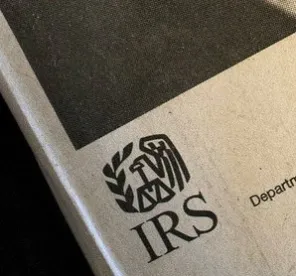On April 10, 2020, the IRS and Treasury Department released Revenue Procedure 2020-22 (the Revenue Procedure), providing guidance with respect to the application of the provisions of the Coronavirus Aid, Relief, and Economic Security (CARES) Act relating to the limitation on interest deductibility under Section 163(j) of the Internal Revenue Code of 1986, as amended (the Code). The CARES Act increases the cap on interest deductions under Section 163(j) of the Code, potentially allowing taxpayers to deduct a greater portion of their business interest in taxable years beginning in 2019 and 2020.1 As a result, taxpayers may reduce their taxable income, and their cash tax liability, in those years. The Revenue Procedure provides the technical direction necessary for taxpayers to apply the changes in interest deductibility included in the CARES Act or to elect out of the application of certain aspects of these changes.
Background
Section 163(j) of the Code, enacted under the Tax Cuts and Jobs Act (TCJA) on December 20, 2017, subjects taxpayers to an annual limitation on interest deductions generally equal to the sum of (a) the taxpayer's interest income for the taxable year, and (b) 30 percent of the taxpayer's adjusted taxable income (ATI) for the taxable year (the Limitation).2 A taxpayer's ATI is calculated in a manner similar to EBITDA until the end of 2021 and, thereafter, ATI will be reduced by the taxpayer's depreciation, amortization, and depletion deductions. Interest expense in excess of the Limitation may be carried forward indefinitely. The Limitation for partnerships is first determined at the partnership level, with interest expense in excess of the Limitation (Excess Business Interest Expense, or EBIE) allocated among the partners. EBIE is carried forward at the partner, rather than the partnership, level and deducted, in a subsequent year, when such partner is allocated excess taxable income (ETI) from the same partnership.
Under the CARES Act, the Limitation may be computed including 50 percent, rather than 30 percent, of ATI for taxable years beginning in 2019 and 2020, for taxpayers other than partnerships, and for taxable years beginning in 2020 for partnerships (the 50 Percent ATI Ceiling). Taxpayers may elect out of utilizing the 50 Percent ATI Ceiling. In addition, under the CARES Act, a partner may deduct 50 percent of its allocable share of the partnership’s EBIE determined for 2019 in the partner's first taxable year beginning in 2020 without limitation (the 50 Percent EBIE Allowance). Partners may elect out of the 50 Percent EBIE Allowance. Taxpayers may choose to elect out of the 50 Percent ATI Ceiling or the 50 Percent EBIE Allowance, for planning purposes, possibly to defer deductions to future years when taxable income cannot be fully offset with net operating losses or to minimize interest expense payable to non-U.S. affiliates for purposes of calculating the base erosion and anti-abuse tax (BEAT).
Finally, under the CARES Act, a taxpayer may elect to use its ATI amount from its 2019 taxable year to calculate its Limitation for 2020 (the 2020 ATI Election).
Electing Out of the 50 Percent ATI Ceiling
The Revenue Procedure provides guidance for electing out of the 50 Percent ATI Ceiling. No formal statement is required to make such election. A taxpayer, other than a partnership, may elect out of the 50 Percent ATI Ceiling by timely filing or amending its federal income tax return for a 2019 or 2020 taxable year using the 30 percent ATI ceiling. A partnership is permitted to make the election out of the 50 Percent ATI Ceiling, but only for a 2020 taxable year, by timely filing or amending Form 1065 or filing an administrative adjustment request under Section 6227 of the Code (an AAR) using the 30 percent ATI ceiling in its calculation of the Limitation.
The Commissioner must consent for a taxpayer to revoke an election out of the 50 Percent ATI Ceiling. The Commissioner will grant the taxpayer consent to revoke such election if the taxpayer amends its federal income tax return or, in the case of a partnership, amends its Form 1065 or files an AAR, for the applicable taxable year using the 50 percent ATI Ceiling.
Electing Out of the 50 Percent EBIE Allowance
The Revenue Procedure also provides guidance for a partner electing out of the 50 Percent EBIE Allowance. A partner may elect out of the 50 Percent EBIE Allowance by timely filing or amending its federal income tax return or, in the case of a partner that is a partnership, timely filing or amending Form 1065 or filing an AAR, in each case, determining its Limitation without utilizing the 50 Percent EBIE Allowance. A partner may revoke such election by amending its federal income tax return or, in the case of a partner that is a partnership, amending Form 1065 or filing an AAR, in each case, determining its Limitation utilizing the 50 Percent EBIE Allowance.
Making the 2020 ATI Election
Finally, the Revenue Procedure provides guidance for taxpayers wishing to make the 2020 ATI Election. A formal statement is not required to make or revoke such election. A taxpayer may make the 2020 ATI Election by timely filing or amending its federal income tax return or, in the case of a partnership, timely filing or amending Form 1065 or filing an AAR, in each case, for a 2020 taxable year using the taxpayer's 2019 ATI amount. A taxpayer may revoke the election by amending its federal income tax return or, in the case of a partnership, amending Form 1065 or filing an AAR, in each case, for a 2020 taxable year using the taxpayer’s 2020 ATI amount.
If a taxpayer makes the 2020 ATI Election for a short 2020 taxable year, the taxpayer's 2020 ATI amount will equal the dollar amount that bears the same ratio to such ATI as the number of months in the short taxable year bears to twelve (12).
Effective Date
The Revenue Procedure is effective as of April 10, 2020.
1 Click here for a full description of the tax provisions included in the CARES Act.
2 Click here for a full description of the Limitation as originally enacted under the TCJA.




 />i
/>i

